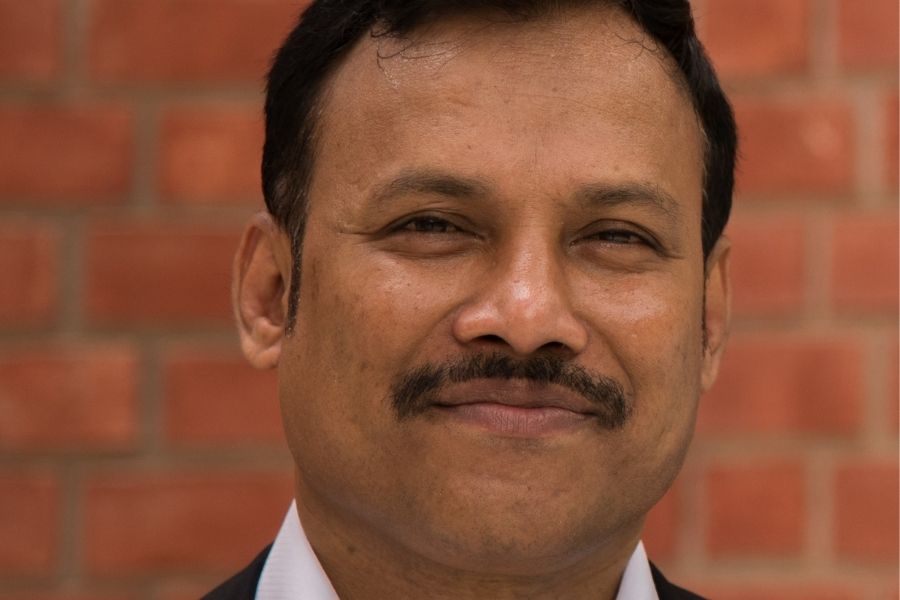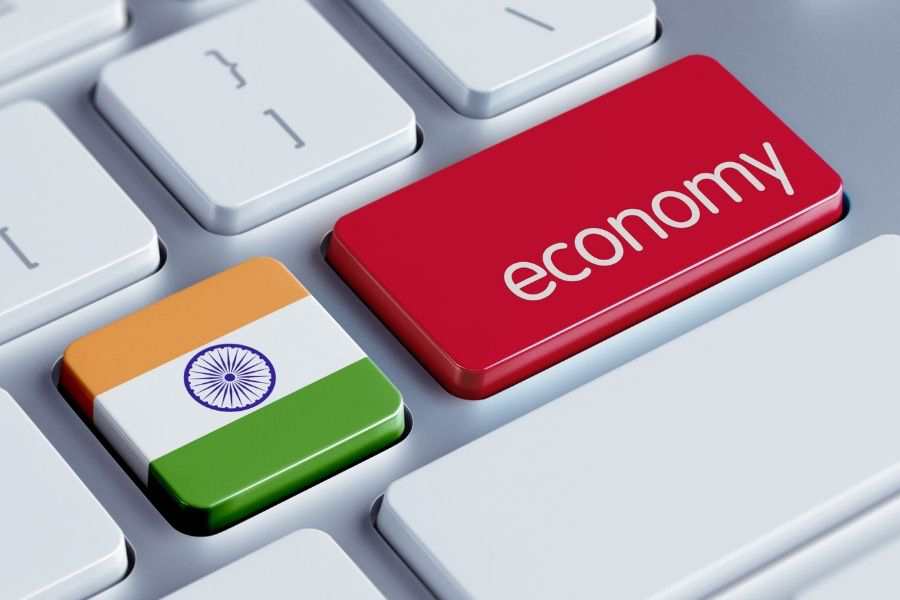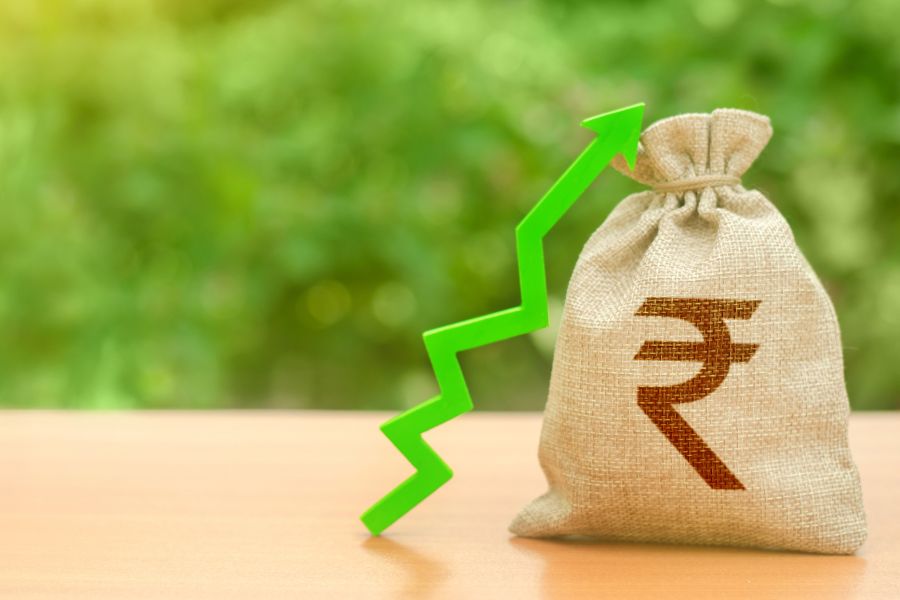Indian economy in the Second Wave: From reversal to resilience!
Prof. D. Tripati Rao, IIM Lucknow, opines that the road to recovery and sustenance of growth depends on how quickly and how well India manages the second wave with a medium- to long- term strategy taking precedence over short-term immediate repair fiscal Band-Aids to tackle a once-in-a-century pandemic. Since inflation is spiking, fiscal policy through deep state intervention must play a far greater role than nimble monetary policy.

IBT: Despite the surge in cases, India’s merchandise exports have shown robust growth in April’ 2021. What are the expectations for the sustainability of this growth?
Prof. D Tripati Rao: Well, on the back of a low base of last year due to disrupted global supply chains, trade shocks and restricted internal movement, the provisional trade data suggests that merchandise exports registered around 197% growth with an increase in value of exports from about US$ 10.36 billion to close to US$ 30.2 billion and merchandise imports growing by 166% from US$ 17.12 billion to US$ 45.5 billion during April. Yet, it softened compared to an impressive growth during March with exports and imports at US$ 34.45 billion and US$ 48.38 billion respectively.
Therefore, we need to wait and watch to see whether merchandise trade registers sustained growth in the coming quarters. The gradual reopening of US businesses, fall in unemployment numbers beating market expectations, and President Biden’s announcement of American Rescue Plan has turned consumer confidence buoyant.
On similar lines, growth in the 27-nation European bloc has gone up from February’s prediction of 3.7% to 4.2%. Crude oil prices are elevated to a two-year high, with the gradual recovery in global demand alongside progress in vaccination. Yet there are significant downside risks playing out that may prick the global demand.
We can observe that India’s pharmaceuticals exports have diversified in terms of products and newer geographies. Besides this, we are also witnessing substantial increase in exports of engineering goods, jewellery, and textile shipments. Post-lockdown, large-scale reverse migration and subsequent mapping of them in work engagement at district level facilitated a surge in labour-intensive exports such as handicrafts, textiles, gems and jewellery.
But at the same time, the sustainability of exports remains vulnerable to the infectious second COVID wave, localised containment zones and curfews, market sentiments and global demand. This has once again disrupted labour-intensive production and inter-state movement of goods with shortage of manpower.
However, the silver lining is that the export push is coming from the recovery of newer markets in some sectors. Refreshingly, Southeast Asia started buying rice from India! In a nutshell, all depends on how quickly and how well India manages the second wave, progress in vaccination in India and worldwide, and the momentum in the global economy in the coming quarters.
WTO projection of an increase of 8% in world merchandise trade in 2021 after a fall of 5.3% in 2020, even with downside risks, is a basis for optimism for Indian industry to sustain momentum in exports growth.
IBT: What sectors are showing/expected to show resilience during the second wave of COVID-19? Why? Conversely, which sectors are in urgent need of support?
Prof. D Tripati Rao: The infectious second wave that gripped India like a tsunami has raised questions on bouncing back of the economy! Most of the regions across states have imposed lockdowns or curfews. With heightened uncertainty due to steep rise in infection rates, insipid vaccine progress, overstressed and crumbling health infrastructure and rising mortalities leading to a rise in fear of lives, public movement is significantly restricted.
IIP has contracted by 3.6% in February, with core IIP contracting by a 4.6%. The spike in inflation reflects both cost-push due to supply-side disruptions as well as demand-led upsurge in the global crude and commodity prices. CPI headline numbers hit 5.5% in March 2021, while WPI shot up to a 96-month high of 7.4%.
During the pandemic, education, banking, pharmaceuticals, IT, and e-retail were resilient and registered growth. Edutech has registered substantial growth, as students got inclined towards online learning for academic progress when schools and coaching centres were closed.
As the curfews and lockdowns were imposed in respective states, people relied much more on e-retails such as, Big Basket, Grofers, Amazon and Flipkart for quick and no-touch delivery; reducing the risk of infection. Banking industry experienced heightened cash transactions with public hoarding cash for emergency purpose during the pandemic.
Among all, pharmaceutical products grew phenomenally. Initially, there was a higher demand for healthcare amenities such as, disinfectants, masks, sanitizers and germ free soaps to protect from infection. Later, the compulsion to protect lives by the infected, demand for antiviral drugs and antibiotics.
As during the first wave, adversely affected sectors are auto, construction, trade, transport, travel and tourism, mining and quarrying aviation, hotel and restaurants, recreation and consumer retail. Although these sectors may register overall positive growth this financial year, we need to note that they have sharply shrunk last year.
Of these, auto and trade may not be affected as badly as during the first wave. Although some of these sectors are still afflicted by supply chain constraints and disruptions in distribution, most of them adapted by learning from adversity and therefore built resilience. However, the infectious second wave may have crippled the hospitality, hotel and restaurants, tourism, aviation and construction industries that were already facing a liquidity crunch and losses from the first wave.
With production coming to a grinding halt and reverse migration leading to shortage of labour force, huge investments and capital are locked in the large-scale real estate projects. Therefore, these sectors may need deep state intervention through active fiscal redressal.
IBT: According to CMIE data, India’s employment rate fell to 36.79% in April’ 2021. How is rising unemployment going to impact the recovery and what can the government and industry do to address the issue?
Prof. D Tripati Rao: As has happened during last year’s lockdown, as per CMIE, the employment rate fell from 37.56% in March to 36.79% in April, hitting a four-month low and wiping out about 7.35 million jobs. In the month of April alone, the national unemployment rate shot up from 6.5% to 7.9%. The granular monthly data is alarming to see that the ‘unemployed yet not looking for job’ numbers have increased from 15.99 million to 19.43 million. With the spread of the second wave to rural areas, shutting down of MSMEs and reverse migration, a portion of labour force has withdrawn from the labour market.
This is going to result in potential loss of output and hence the road to recovery would be tardy. Formal sectors such as, retail, hospitality, tourism and travel industries, and informal and semi-formal household jobs and office support systems have been hit significantly in April. Governments across the world are adopting twin approaches to minimise the adverse effects of supply shocks:
(i) Income-guarantee support – For those who lost jobs and livelihoods, and
(ii) Wage-guarantee support through putting restrictions on layoffs, job retention through wage subsidies, short-term compensation schemes, etc.
Some of the states are already making Direct Benefit Transfers (DBT) to the accounts of beneficiaries. GoI has already launched the Atmanirbhar Bharat Rozgar Yojana (ABRY) benefiting over 16.5 lakh people. Under the ABRY, the GoI is crediting the employees’ share (12% of wages) and employers’ share (12% of wages) of contribution payable for two years. Of these, 13.64 lakh are new entrants. GoI’s target is of 50-60 lakh under this scheme, which needs a close proctoring of the progress and implementation.
A similar contribution was made under the Pradhan Mantri Garib Kalyan Yojana (PMGKY). These countercyclical fiscal transfers act as stabilisers during these unprecedented times of income vulnerability and loss of livelihoods. The government’s ESI program also comes to the rescue but only partially. An unemployment insurance or a DBT until the virus subsides is hardly sustainable.
While these measures are equally to be supported by wage-guarantee support measures including restriction on layoffs and wage compensation will ease out the pain of income vulnerability. Therefore, the bottom line is irrespective of the alternative approaches that government chooses to follow, it must bear in mind that, in the likelihood of virus keep coming back in periodic waves, a medium- to long- term fiscal strategy to tackle the pandemic must take precedence along with short-term immediate repair fiscal Band-Aids. There should be renewed focus towards mapping reverse migrants at village/district level for work engagement.
IBT: Since, rural areas are among the worst hit in the second wave, what extent of damage is possible for the agriculture sector? What support would be required by farmers?
Prof. D Tripati Rao: Recent reports suggest that the second wave has already started spreading in rural areas and the evolving situation is very appalling given the state of health infrastructure, awareness and the reach of government aid. Thankfully, agricultural production was least affected during the first wave due to the preparedness and prompt action of states. However, this time, farmers have three-fold worries:
(i) Selling the existing produce
(ii) Lost opportunity of a kharif season, and
(iii) Receding global demand.
As per a Crisil report, the share of infections in rural India has risen from 21% to 30% just in one month, so multiple logistical and labour force constraints can come back to haunt us. UP and Bihar have been unable to achieve their targeted rabi crops harvests. Most of the agri-mandis as well as intra-state transportation have been shut down. Chana, a ruling crop in MP, is dependent on government procurement at MSP. The situation in Rajasthan, Gujarat and Maharashtra is no different.
Therefore, the only way to restore agri-supply chains, increase agri-GVA and minimise rural distress is to contain the spread of the virus through faster vaccination. This would help farmers benefit from the elevated global commodity prices by the export of kharif crops such as, cotton, guar gum, maize and soybean.
The government may invest in agri-infrastructure – storage, logistics and transport to rejig the supply chains, strengthen community-based farm-producer groups, leverage ICT for deep penetration to rural areas and encourage private investment to boost agri-R&D. This aligns with GoI’s ambition of doubling farm income and agri-exports to US$ 60 billion by the year 2022.
IBT. How are RBI’s measures to support small borrowers/MSMEs and the healthcare sector expected to support the economy?
Prof. D Tripati Rao: It is too early to speculate on the impact of slew of policy measures that RBI announced just about two weeks before to help support the crumbling health sector and the most vulnerable MSMEs. RBI will make available “on-tap liquidity” of Rs. 50,000 crores with up to three years’ tenure at a repo rate of 4%. This is primarily to boost health infrastructure to tackle the Covid pandemic.
This would cover a wider variety of lending including to vaccine manufacturers, importers and suppliers of vaccines and priority medical devices, importers of Covid-related drugs, hospitals and dispensaries, pathology labs, manufactures and suppliers of oxygen and ventilators, logistics firms and also patients for treatment. Since these loans can be classified as priority-sector lending, it would incentivise banks to ramp up much needed liquidity support for the overstressed health sector. By making it easy to access emergency working capital requirements, it will enhance vaccine and drug manufacturing capacity.
It is expected to incentivise banks to provide liquidity support to MSMEs, since such exposures are not to be considered as banks’ liabilities while calculating cash reserve ratio. Further, RBI has extended the moratorium of loans up to September 30 for enterprises with an exposure up to Rs. 25 crore. Further, easing of KYC norms will benefit self-employed and micro partnership enterprises. Therefore, all in all, Resolution Framework 2.0 is welcoming use of monetary policy levers to ameliorate liquidity constraints that may emerge in augmenting healthcare infrastructure.
IBT: What is your outlook for India’s recovery to its pre-pandemic size and level of growth? What are the steps that the government should take to revive economic activity and boost consumer sentiments?
Prof. D Tripati Rao: The reports indicate that the second wave will subside in the late June and July but the possibility of a third wave within 6 months cannot be ruled out. While piggybacking on a good agricultural production year and growing exports led to an optimism of a quick rebound of the economy, there are no signs of relief in the near future.
But data does not show any signs of contraction as was the case during last year. Businesses have shown resilience after rejigging supply chain and logistic timely. Before the advance of second wave, the projected growth estimates were 11.7% in FY22, on the back of a contraction in FY21, and for FY23 around 6.9%.
The positive economic outlook was premised on rapid vaccination, uptick in private investment stimulated by large scale infrastructure expenditure and structural reforms, release of pent-up demand, and growing signs of US and global rebound in late 2021. GoI and RBI have made it amply clear to stay with accommodating stance. However, the second wave with its large scale devastation has upset the calculation.
Now, GoI’s immediate focus for the first two quarters has shifted to containing health risks, quickly dousing and minimising second wave’s adverse effect on the economy through boosting vaccine production and vaccination. Alongside, my take would be for a continuation of medium and long term policy for sustainable recovery. This calls for a policy focus on handholding construction, travel and tourism, textile and manufacturing.
With inflation spiking, fiscal policy through deep state intervention must play more a greater role than monetary policy in combating once in a generation epidemic. Large scale public investment in infrastructure will obviate unemployment bulge getting out of control, use of idle capacity and eliminating output gap.
IBT: The pandemic has accelerated a shift in consumer habits towards purchases through digital mediums. What role will technology play in the post-pandemic period as a factor for global competitiveness and GDP growth?
Prof. D Tripati Rao: Ongoing pandemic is acting as a force multiplier in embracing technological platforms, leading not just only a cultural shift in consumer habits but also in all realms of life. Technology percolation and tech-friendliness in India has shot up greatly. As safety of life has taken precedence, staying inside the comfort of home, consumers are able to meet their varied needs on their finger tips through a mobile phone. It has enabled dissemination of information, safety of frontline workers, infrastructure provision and tele-medicine to cure pandemic affected and related ailments. Tech-enabled services are providing MSMEs a level playing field in all critical functions, such as inventory management, sales & marketing, accounting and customer service.
Financial institutions are able to cut down on the maze of complex regulatory and procedural loan application and sanction processes and automation of risk assessments via tech-based solutions; bringing down their operational costs. According to India Stack, the digital payments space is thriving and is putting India on the trajectory to becoming a cashless economy in the future.
Remote working is no longer restricted to the white-collared jobs but also extends to specialised professions such as, doctors treating patients through tele-medicine. The Ministry of Electronics and Information Technology has already jumpstarted through Pradhan Mantri Gramin Digital Saksharta Abhiyan (PMGDISHA), Digital North East Vision 2022, Digital Villages Scheme, budget allocations for artificial intelligence, investment in advanced space technology, and the Ministry of Skill Development and Entrepreneurship is focusing on imparting technical skills such as, big data, robotics and VR.
Prof. D Tripati Rao is currently Chairman, Executive Education (MDP), Indian Institute of Management Lucknow. He has obtained his Ph. D. from the Department of Economics, University of Mumbai under the auspices of RBI Monetary Economics Endowment Research Fellowship and M.Phil degree in Applied Economics from CDS, Trivandrum, JNU. Prior to joining the institute, he was with XIMB and T.A. Pai Management Institute, Manipal. He has been teaching Macroeconomic Environment, Managerial Economics and World Economy, International Trade and Business to both Post-Graduate students and FPM Scholars since 2005. The views expressed here are his own.
He gratefully acknowledges the able assistance by Ms. Deeksha Vanga Reddy, Incoming-TAS Manager













Leave a comment